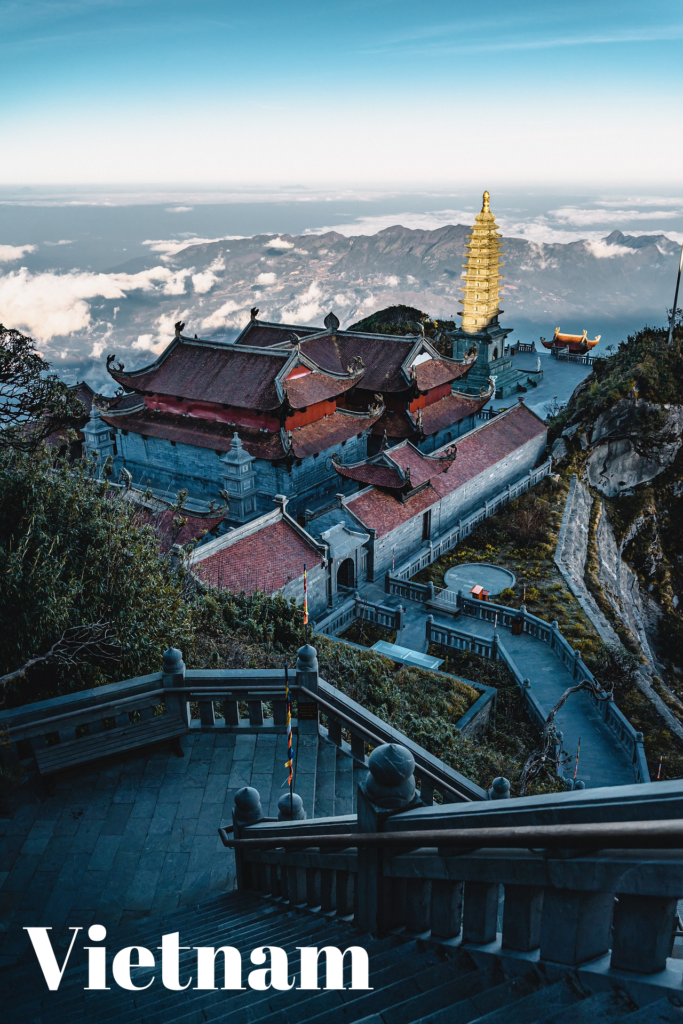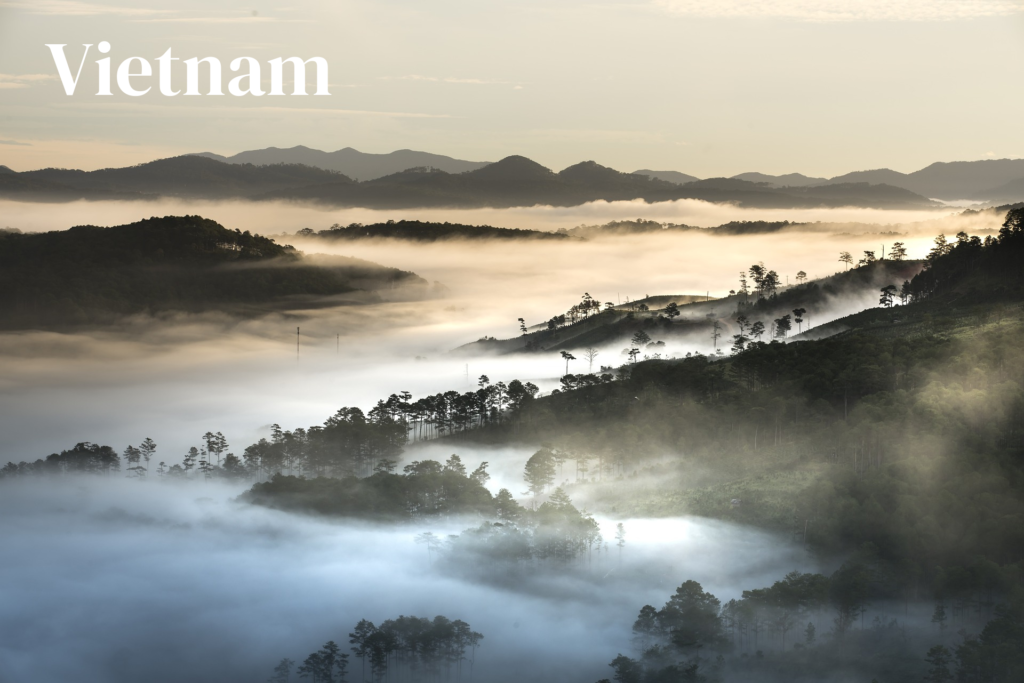
I. Introduction
Vietnam is a country blessed with breathtaking natural beauty, from the lush mountains of the north to the fertile plains of the south. Its diverse landscapes, rich biodiversity, and unique cultural heritage make it one of Southeast Asia’s most alluring destinations. Natural wonders such as the towering limestone formations of Ha Long Bay and the tranquil waterways of the Mekong Delta attract travelers from around the world, seeking to immerse themselves in Vietnam’s untouched splendor. With an increasing focus on eco-tourism, Vietnam is becoming a top destination for nature lovers looking to explore sustainably.
II. Ha Long Bay: A World Heritage Wonder
Ha Long Bay, one of the most iconic natural sites in Vietnam, is a UNESCO World Heritage Site located in the Gulf of Tonkin. Known for its emerald waters and thousands of limestone karst islands, the bay offers an otherworldly landscape. These karst formations, shaped over millions of years, rise dramatically from the sea, creating a maze of islands, caves, and grottos to explore.
One of the most impressive caves is Sung Sot Cave, known for its vast chambers and awe-inspiring stalactites. Visitors to Ha Long Bay can embark on overnight cruises, gliding through the bay’s calm waters and exploring hidden lagoons, or they can kayak through the quieter parts of the bay, away from the tourist crowds. Fishing villages like Cua Van offer a glimpse into the traditional life of the local people, who have lived in harmony with the bay for generations.
III. Sapa: Terraced Rice Fields and Mountain Vistas
Tucked away in the northern highlands of Vietnam, Sapa is famous for its dramatic terraced rice fields, which cascade down the mountains like steps carved into the earth. These terraces, especially during the growing season, create a stunning patchwork of green that contrasts with the surrounding mist-covered mountains.
Sapa is not just a destination for nature lovers but also for those interested in cultural immersion. The town is home to several ethnic minority groups, including the Hmong, Dao, and Tay. Visitors can hike through the rice fields and visit remote villages to learn about the customs and traditions of these communities. Trekking to Mount Fansipan, the highest peak in Indochina, offers adventurers a challenging but rewarding experience, with panoramic views from the summit.

IV. Phong Nha-Ke Bang National Park: Exploring Vietnam’s Caves
Phong Nha-Ke Bang National Park is a haven for adventurers and nature enthusiasts, home to some of the world’s most impressive cave systems. Among them is Son Doong Cave, the largest cave in the world, which features its own ecosystem, with jungles, rivers, and even weather patterns inside its vast chambers.
The park, a UNESCO World Heritage Site, is also home to Phong Nha Cave and Paradise Cave, which are equally mesmerizing with their towering stalagmites and crystal-clear underground rivers. In addition to exploring caves, visitors can trek through the park’s dense jungle, which is teeming with wildlife. Conservation efforts are in place to protect this biodiversity hotspot, and responsible tourism is encouraged to preserve the natural beauty for future generations.

V. Da Nang and the Central Coast: Beaches and Mountains
Da Nang, located on Vietnam’s central coast, offers a perfect blend of stunning beaches and mountainous landscapes. My Khe Beach, often referred to as one of the most beautiful beaches in the world, boasts long stretches of soft, white sand and clear blue waters, making it a paradise for beachgoers.
For those seeking more than just the beach, Da Nang is also home to the Marble Mountains, a cluster of limestone and marble hills. These mountains are dotted with caves, temples, and pagodas that have been places of worship for centuries. A visit to the Ba Na Hills provides another spectacular view, with its famous Golden Bridge—a footbridge held aloft by two giant hands—and a cable car ride offering panoramic views of the surrounding area.
VI. The Mekong Delta: Vietnam’s Rice Basket
The Mekong Delta, often referred to as the “Rice Basket” of Vietnam, is a vast network of rivers, swamps, and islands in the southern part of the country. This fertile region is responsible for much of Vietnam’s agricultural output, particularly rice, and is renowned for its unique way of life centered around the waterways.
Floating markets, such as Cai Rang, are one of the main attractions of the Mekong Delta. Here, merchants sell fresh produce directly from their boats, creating a colorful and bustling scene on the water. Visitors can explore these markets by boat, gliding through the narrow canals and experiencing the rhythm of life in the delta. The area is also home to a wide variety of wildlife, including rare bird species, and eco-tourism initiatives are helping to preserve the delicate balance of this fragile ecosystem.
VII. Eco-tourism in Vietnam
Vietnam’s natural beauty is not only a treasure for its people but also a resource that requires protection. The country has taken steps to promote sustainable tourism, ensuring that its natural wonders can be enjoyed by future generations. Eco-tourism initiatives are growing, with a focus on minimizing the environmental impact of tourism and involving local communities in conservation efforts.
In places like Sapa, Ha Long Bay, and the Mekong Delta, community-based tourism projects offer travelers the chance to stay with local families, learn about their way of life, and contribute directly to the preservation of these unique environments. These efforts are helping to protect Vietnam’s natural beauty while providing economic opportunities for local people.
VIII. Conclusion
From the towering karst formations of Ha Long Bay to the tranquil waterways of the Mekong Delta, Vietnam is a country of extraordinary natural beauty. Its landscapes are as diverse as they are breathtaking, offering something for every type of traveler. As Vietnam continues to develop its eco-tourism industry, the focus remains on preserving these natural wonders while sharing them with the world. Visitors are encouraged to explore responsibly, respecting the environment and supporting sustainable travel initiatives to help protect the country’s rich natural heritage.


